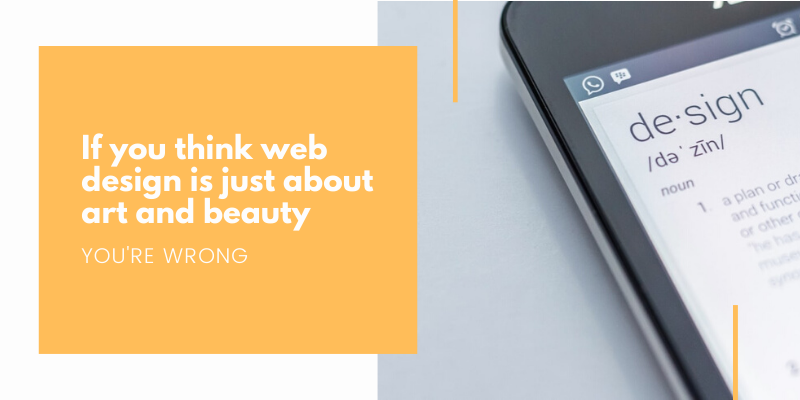
You may think that web design and art are the same thing. Yes, a professional web designer can make your website look beautiful, but that’s only a part of the process.
The difference between art and design
While art is typically an evocative and creative expression, design is something else altogether.
Design is all about fulfilling a need. Achieving a goal. Meeting an objective.
To that end, a proper web design process will start by addressing these questions:
- Why does your website exist? What is it for?
- Who is your target audience?
- What is the desired outcome after they land on your website?
Therefore, if you seek out a web designer for the sole purpose of making your website look good aesthetically, you’re looking at it the wrong way. For this simple reason: just because your website looks nice, it doesn’t mean it’s a good website.
It’s all about user experience (UX)
To create a website that serves its purpose, a web designer should help you craft an experience for users. So that it's as easy as possible for users to take the action you want them to.
In fact, some of the most visited websites in the world are very well designed in terms of UX. They determine a desired outcome and design accordingly, for example:
- Social media: to interact
- Ecommerce: to buy
- Content sites: to read or watch more
Even if your traffic isn’t as high as Facebook, you should still have the same UX principles, to drive action. For example:
- Corporate sites: to learn about company
- Restaurants: to make reservations
- Suppliers/manufacturers: to learn about product, and see list of places to buy
- Education institutions: to learn about the institution, and enrol
Other UX considerations
A web designer should also help make browsing your website as frictionless as possible.
- Loading speed
- Users tend to drop out if your website loads too long. So your site has to be designed in a way that users will see something first while the rest of the site loads.
- Use the PageSpeed Insights tool to see your website’s speed score: https://developers.google.com/speed/pagespeed/insights/
- Mobile responsiveness
- As smartphone browsing becomes common, your website needs to be easily navigated on both small and large screens.
- Use the Mobile-Friendly test to evaluate your website’s friendliness on mobile devices: https://search.google.com/test/mobile-friendly
- Internal functions
- Ideally, all user activity should remain inside your website, without having to bounce your users away to something else.
- For example:
- Sending you an email without opening their email application
- Viewing contents without downloading a PDF
- Buying your products without installing an app
Where art and beauty comes in
Once your user experience has been designed, now your website can accommodate art. A web designer will help you determine colours, fonts, visual elements, photography, iconography, spacing, and so on. If you have an existing brand identity, your website will visually follow suit.
To take it one step further, your website can also have animations to liven up the page. Or embedded videos to better convey information. As long as it does not compromise the experience of your user.
In conclusion, web design will make the difference between a pretty decoration and a money-generating asset. So be sure your website is worth your investment.